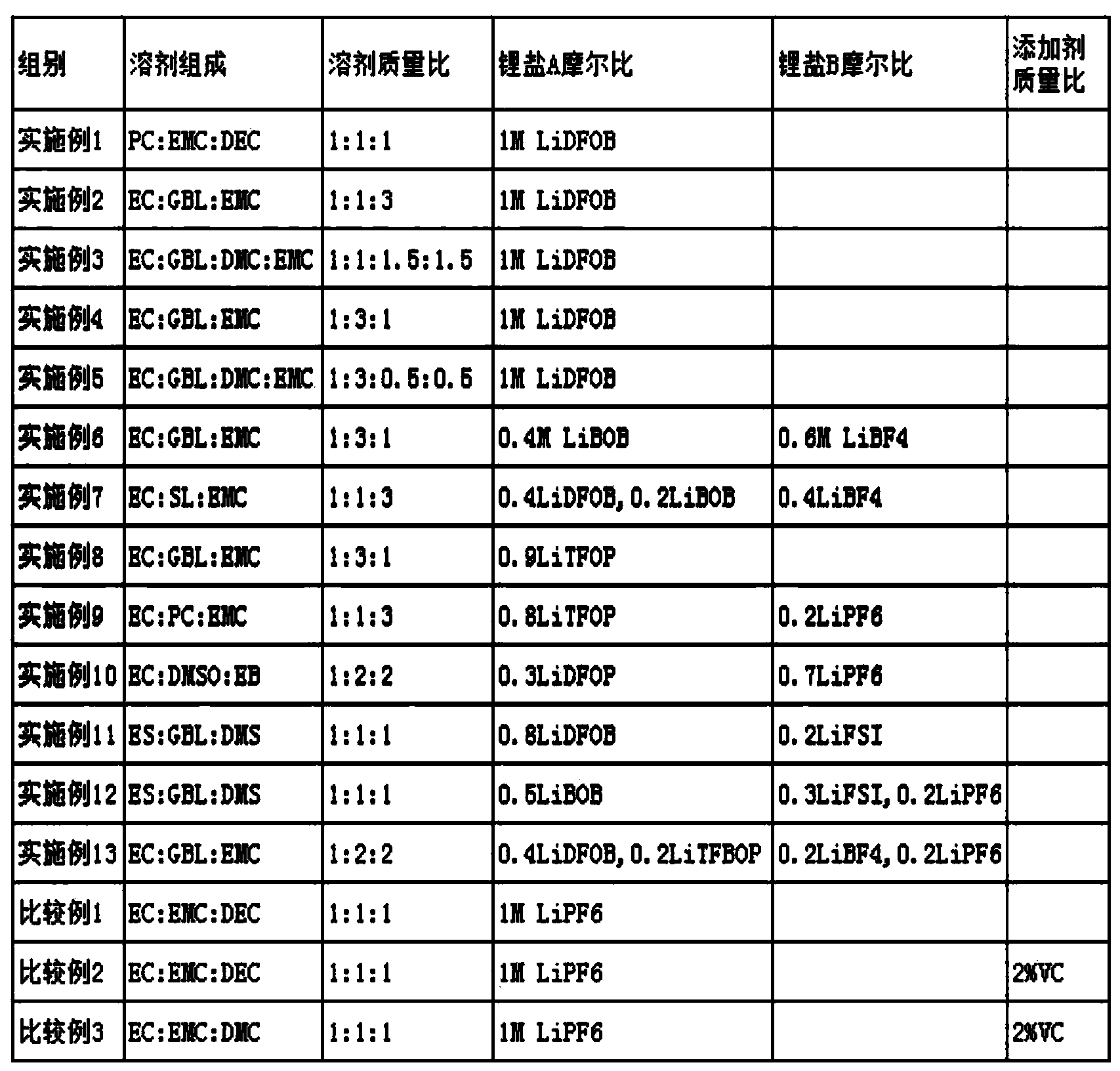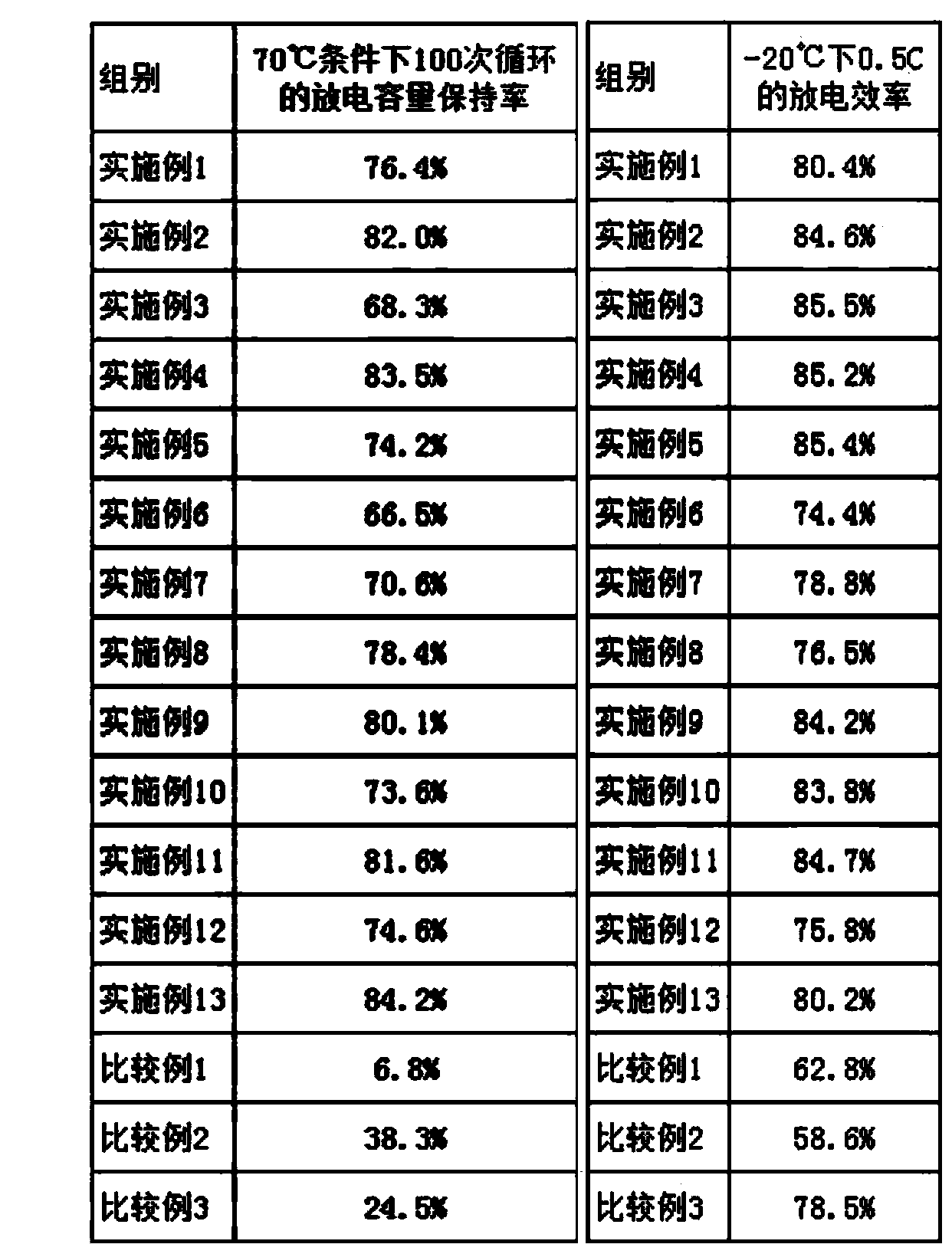Lithium ion battery electrolyte solution
A lithium-ion battery, electrolyte technology, applied in secondary batteries, organic electrolytes, non-aqueous electrolytes, etc., can solve the problems of low temperature performance of lithium batteries, and achieve high voltage resistance performance, high thermal decomposition temperature, and electrical conductivity. high effect
- Summary
- Abstract
- Description
- Claims
- Application Information
AI Technical Summary
Problems solved by technology
Method used
Image
Examples
Embodiment 1
[0024] The production of lithium-ion battery positive electrode sheet: the active material lithium nickel cobalt manganese oxide LiNi 0.5 co 0.2 mn 0.3 o 2 , the conductive agent Super-P, and the binder PVDF were dispersed into N-methyl-2-pyrrolidone according to the mass ratio of 92:4:4, and stirred evenly to obtain the positive electrode slurry. The slurry is evenly coated on both sides of the current collector aluminum foil, dried, cold-pressed, stripped, then vacuum-dried, and the tabs are welded to make a positive electrode sheet of a lithium-ion battery that meets the requirements.
[0025] Production of lithium-ion battery negative plate:
[0026] The active material natural graphite, the conductive agent Super-P, the binder styrene-butadiene rubber SBR, and the binder carboxymethylcellulose sodium CMC are added to the solvent deionized water according to the mass ratio of 96:1.5:1.5:1, and stirred evenly to obtain Negative slurry. The slurry is evenly coated on bo...
Embodiment 2
[0032] A lithium-ion battery fabricated in the same manner as in Example 1 was used. The solvent in the electrolyte is ethylene carbonate (EC), γ-butyrolactone (GBL), and ethyl methyl carbonate (EMC) in a mass ratio of 1:1:3, and the lithium salt is lithium difluorooxalate borate (LiDFOB). The concentration is 0,9mol / L.
Embodiment 3
[0034] A lithium-ion battery fabricated in the same manner as in Example 1 was used. The solvent in the electrolyte is ethylene carbonate (EC), γ-butyrolactone (GBL), dimethyl carbonate (DMC), ethyl methyl carbonate (EMC) mixed in a mass ratio of 1:1:1.5:1.5, lithium salt Lithium difluorooxalate borate (LiDFOB), the concentration is 1mol / L.
PUM
 Login to View More
Login to View More Abstract
Description
Claims
Application Information
 Login to View More
Login to View More - Generate Ideas
- Intellectual Property
- Life Sciences
- Materials
- Tech Scout
- Unparalleled Data Quality
- Higher Quality Content
- 60% Fewer Hallucinations
Browse by: Latest US Patents, China's latest patents, Technical Efficacy Thesaurus, Application Domain, Technology Topic, Popular Technical Reports.
© 2025 PatSnap. All rights reserved.Legal|Privacy policy|Modern Slavery Act Transparency Statement|Sitemap|About US| Contact US: help@patsnap.com


